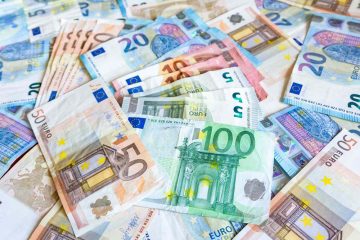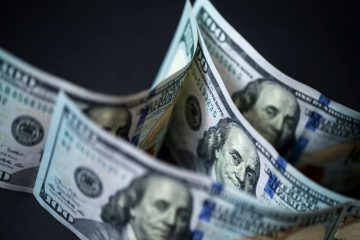| Symbol | Last | Change | % | High | Low |
|---|---|---|---|---|---|
| USD / EUR | 0.8517 | -0.0002 | -0.02% | 0.0000 | 0.0000 |
| Close | GMT Time : Sat Dec 13 2025 04:11 | ||||
USD/EUR : Intraday Live Chart
USD/EUR : Technical Signal Buy & Sell
| 5 Min Signal | 1 Hour Signal | 1 Day Signal |
|---|---|---|
| Buy | Sell | Sell |
USD/EUR : Moving Averages
| Period | MA 20 | MA 50 | MA 100 |
|---|---|---|---|
| 5 Minutes | 0.85 | 0.85 | 0.85 |
| 1 Hour | 0.85 | 0.85 | 0.86 |
| 1 Day | 0.86 | 0.86 | 0.86 |
| 1 Week | 0.86 | 0.89 | 0.91 |
USD/EUR : Technical Resistance Level
| Resistance 1 - R1 | Resistance 2 - R2 | Resistance 3 - r3 |
|---|---|---|
| 0.0000 | 0.0000 | 0.0000 |
USD/EUR : Technical Support Level
| Support 1 - S1 | Support 2 - S2 | Support 3 - S3 |
|---|---|---|
| 0.0000 | 0.0000 | 0.0000 |
USD/EUR : Periodical High, Low & Average
| Period | High Change from Last | Low Change from Last | Average Change from Last |
|---|---|---|---|
| 1 Week | 0.8601 -0.0084 | 0.0000 +0.8517 | 0.8564 -0.0047 |
| 1 Month | 0.8690 -0.0173 | 0.0000 +0.8517 | 0.8613 -0.0096 |
| 3 Month | 0.8709 -0.0192 | 0.0000 +0.8517 | 0.8591 -0.0074 |
| 6 Month | 0.8769 -0.0252 | 0.0000 +0.8517 | 0.8536 -0.0019 |
| 1 Year | 0.9830 -0.1313 | 0.0000 +0.8517 | 0.8803 -0.0286 |
USD/EUR : Historical Chart
USD/EUR Exchange Rate History and Key Events: A Century of Currency Movements
The USD/EUR exchange rate serves as one of the most traded and closely monitored currency pairs in global forex markets. As the primary currency pair representing the two largest economic blocs in the world — the United States and the Eurozone — its fluctuations offer deep insights into shifting macroeconomic trends, central bank policies, and geopolitical developments. From the post-war Bretton Woods system to the introduction of the euro and modern monetary tightening cycles, the story of USD/EUR is a rich reflection of financial history and investor sentiment.
Pre-Euro Era: USD and European Currencies (Before 1999)
Before the euro’s birth, the US dollar traded against individual European currencies like the Deutsche Mark (Germany), French Franc, and Italian Lira. These national currencies exhibited volatility in response to inflationary pressures, oil shocks, and monetary reforms, particularly during the 1970s and 1980s.
Following the collapse of the Bretton Woods system in 1971, exchange rates became more market-driven. During the late 1970s and early 1980s, the dollar surged against European currencies due to aggressive Federal Reserve rate hikes under Paul Volcker, which aimed to combat inflation in the U.S.
In the 1990s, the Maastricht Treaty was signed, paving the way for monetary union. This decade saw growing currency stability across Europe as countries prepared to adopt a single currency. Central banks within the European Monetary System (EMS) began pegging their exchange rates to each other more tightly in preparation for convergence.
The Launch of the Euro and Early Volatility (1999–2009)
The euro officially launched on January 1, 1999, as an electronic currency. At that time, the euro was introduced with a value of approximately 1.17 USD, but in the years that followed, it weakened significantly.
Between 1999 and 2002, the euro lost investor confidence due to skepticism about the Eurozone’s ability to manage a unified monetary policy across diverse economies. The exchange rate dropped to 0.8252 USD per euro by October 2000 — its lowest point ever.
However, following 2002, the euro rebounded dramatically. A weakening U.S. dollar, concerns over the growing U.S. budget deficit, and strong European trade surpluses contributed to the euro’s strength. By July 2008, the euro reached an all-time high of 1.60 USD, just before the global financial crisis. The dollar’s decline during this period was also attributed to aggressive interest rate cuts by the U.S. Federal Reserve in response to the subprime mortgage crisis.
The Debt Crisis and Central Bank Interventions (2010–2019)
The 2010s were marked by several structural challenges for the euro. The European sovereign debt crisis hit economies like Greece, Portugal, Ireland, and Spain hard. This led to intense speculation about the viability of the euro itself, causing the exchange rate to fluctuate significantly.
Between 2010 and 2012, the euro traded mostly between 1.20 and 1.45 USD, with sharp drops whenever debt fears peaked. The U.S., on the other hand, entered a period of gradual economic recovery, boosting the dollar.
In 2014, the European Central Bank (ECB) adopted negative interest rates and launched quantitative easing to combat low inflation and stagnant growth. These actions weakened the euro further, driving the USD/EUR rate toward parity. In 2017, the euro briefly rebounded due to improving economic conditions in Europe, but overall, the dollar remained dominant throughout the decade.
Post-Pandemic Policy Shifts and Geopolitical Tensions (2020s)
The 2020s opened with a major global disruption: the COVID-19 pandemic. In the early stages, both the Fed and the ECB enacted massive stimulus programs. The USD weakened initially due to ultra-low interest rates and fiscal deficits in the U.S., while the euro benefited from relatively stronger pandemic responses in Germany and other Northern European countries.
In 2022 and 2023, inflation soared globally, prompting both the Fed and ECB to hike interest rates. However, the Fed’s more aggressive tightening cycle initially supported the dollar. The USD/EUR rate fluctuated between 0.88 and 1.12 EUR per USD during this period.
In 2024 and early 2025, the euro began recovering again, driven by increased fiscal spending in the Eurozone, particularly by Germany and France. Additionally, trade disputes, shifting energy policies, and geopolitical developments (including tensions in Eastern Europe) have affected investor sentiment and the relative strength of both currencies.
As of April 2025, the USD/EUR exchange rate hovers around 0.9124 EUR per USD, reflecting relative stabilization but ongoing global uncertainty.
USD/EUR Exchange Rate by Decade
Below is a historical table tracking the average USD to EUR exchange rate per decade, including the direction of change and relevant macroeconomic highlights:
| Decade | Avg. USD/EUR Rate | Change vs. Prior Decade | Key Economic Highlights |
|---|---|---|---|
| 1990s | ~0.90 (estimated) | — | Pre-euro integration, Maastricht Treaty signed |
| 2000s | 0.95 | 🟢 +5.6% | Euro introduction, post-2000 recovery |
| 2010s | 0.85 | 🔴 -10.5% | Debt crisis, ECB QE, U.S. recovery |
| 2020s* | 0.91 | 🟢 +7.1% | COVID-19, Fed/ECB hikes, fiscal stimulus |
*2020s data current as of April 2025
🟢 = USD Strengthened vs EUR | 🔴 = USD Weakened vs EUR
USD/EUR - US Dollar / Euro Currency Rate
Live Price of USD/EUR. USD/EUR Live Chart, Intraday & Historical Live Chart, Buy Sell Signal, USD/EUR News, USD/EUR Averages, Returns & Historical Data
» USD/EUR
» USD/EUR Real Time Quotes
» USD/EUR Live Chart
» USD/EUR Intraday Chart
» USD/EUR Historical Chart
» USD/EUR Buy Sell Signal
» USD/EUR News
» USD/EUR Videos
» USD/EUR Averages
» USD/EUR Currency Pair
» USD/EUR Historical Data








